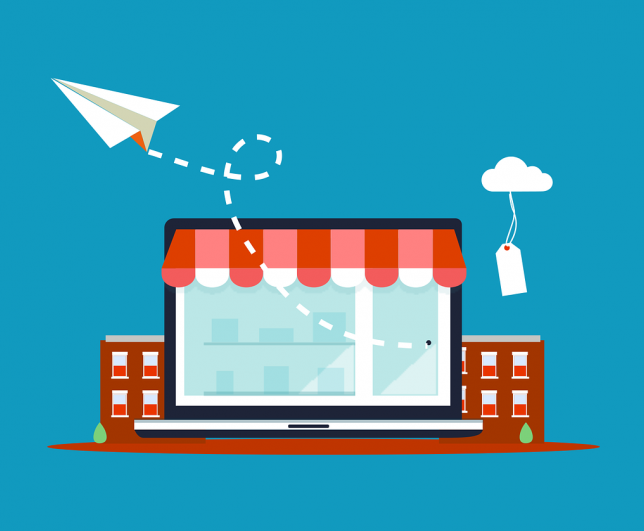So, you’re ready to reach more clients and boost your business. If your mind is steering toward social media, you’re on the right track. Social media is gold when it comes to expanding your customer base. And for a fast stream of sales and wider target base, you need to get familiar with Social Selling.
But what platforms should I use and where do I start? Let us show you the way.
The Best Platforms for Social Commerce
With Facebook and social media, the major advantage is you can offer an unlimited product catalogue without investing in an e-commerce store.
A professional Facebook Page lets you set up an online product catalogue through the Facebook Shop tab and Marketplace. Through Facebook ads, your page traffic will be redirected to your website, where customers can make their purchases.
Facebook has created a Buy button as a call-to-action that inspires customers to take the next step. Thanks to Products Ads, you can promote several items at once through an ad carousel.
From your product catalogue, you can use Dynamics Product Ads to automatically create targeted ads for your customers. They will track what sales pages your clients visited without making a purchase and display new ads accordingly. This is called retargeting.
Instagram
Instagram is home to a powerful community that can drive up your sales through published comments and photos. The network is known as a fun and engaging online platform since it is so easy to use and accessible.
To sell your products on Instagram, you’ll need to create a professional account and set up your Instagram Shopping store. From there, you can import your photos and videos and create your product catalogue. By clicking on a tagged item, the user is automatically redirected to the corresponding product description. And the Buy button will send them to your e-commerce site. With Instagram Shopping, your clients can easily access your products online. The purchase process becomes ultra simple and sales are instant.
And don’t forget to create stories or reels for extra visibility. Stories only last 24 hours (unless they are saved in top stories). Storytelling is super popular these days, and stories are the ideal tool for people looking to join the trend. Reels are also great, and they remain forever accessible on your profile.
Selling your products on Twitter is taking your customer service to the next level. You can leverage a special buyer-seller connection to strengthen brand allegiance. Proof that it works: 80% of Twitter users have mentioned a brand at least once in their tweets. And through sponsored tweets, you will generate interest for a new product, promotion, or regular offers.
The Lead Generation Card lets you easily gather prospects who are likely to make a purchase. These cards increase your conversion rate by drawing in followers and tempting them to click through to your site.
Since the rise of Instagram, Pinterest has taken a bit of a back seat, but the network still offers its share of advantages.
With Pinterest, you can share images of your products by “pinning” them to your “boards.” You’ll want to create your pins to match your message. The platform relies on storytelling and community engagement. For optimal success, take the time to curate beautiful images and compelling texts.
Once again, a professional account lets you sell your products online. The set-up is slightly more complex than with Facebook or Instagram. Pinterest differs from these platforms in that its mission is to offer inspiration, rather than an online store. But it can still work as an entry point for your sales, leading to future opportunities.

8 Tips for Selling Your Products via Social Media
Advertising
Social media exists to communicate. Through communication, you can build a community of clients who will reach out to you when they need you, follow you on all your platforms, and send new customers over to your business. Starting a community from scratch requires a certain familiarity with social media. But beyond posting stories, reels, and brilliant updates, you also need to navigate the jungle of connections that are already out there. Online advertising offers a great springboard for your sales, since ads drive people to your e-commerce site automatically.
Client Recommendations
Who better to sing your praises than your customers themselves? Give them a space where they can share their experience and leave a review. While you don’t want to bribe people to say nice things about you, you can offer to give customers a shout-out on social media, sharing their positive reviews in your statuses, stories, or promo material. With the extra visibility, it’s win-win for everybody.
Leave room for your customer’s posts on your social media platforms. It’s great when they can post photos of your products or their happy faces fresh out of their latest treatment or service. Customer reviews, especially when accompanied with real-time photos, offer proof of quality to your prospects and followers. People are much more likely to believe other clients than a company’s promotional material.
Content
So you’ve set up your online store and you’re ready for the next step: building your community. But on social media, it’s not enough to simply share your products and articles. If that’s all you do, it won’t be long before your audience abandons ship for the competitors. This is where your stellar communication strategy comes in. Give your people quality content with value-added information that adapts to your readers. Don’t let everything revolve around your store. Your community also wants to hear about your team, company, partners, and skills.
The Art of Links
Take your clients where they want to go.
If a user wants to see your products, send them directly to your website product page. If you make them click on a promo offer, then the link needs to lead to the right spot. Don’t send them to the homepage. They’ll probably get frustrated and leave. You’ll also want to create impeccable product descriptions, complete with excellent writing, comprehensive, useful information, and an easy path to purchase. There’s an art to hyperlinks, and you want to master it.
Keep in touch with your contacts
Don’t leave your prospects and clients hanging—respond promptly to feedback, questions, and reviews. A satisfied customer is a loyal customer. One who will spread the word about your products and services. Your response times are important, as is your tone and the care you put into your online interactions. Take the time to adapt your answers to each client.
24/7 Availability
No matter what business you’re in, consumers expect you to be reactive and available. For a social media account to build a strong community, you’ve got to stay present and active. But everyone needs their beauty sleep. To keep customers happy all night long, they invented chatbots. These little conversational robots ensure ongoing communication with your clients. They’re designed to give your clients information when you’re not available. And they’re useful for encouraging sales simply by initiating contact whenever someone lands on your social media pages or website.
Customized Promos
You should adjust your promos based on what platforms you are using. Instagrammers are not the same as the people you’ll find on Facebook, Twitter, or Pinterest. And not all visits are created equal and will vary based on the products you are trying to sell. Through Google Analytics, you can use stats to get a clear profile of your users. From there, you can create personalized offers on each platform. You want to use your growing following to make more sales. Be strategic!
Create a sense of urgency
On social media, you have access to your customers’ delicate heartstrings. It’s the perfect place to connect with their desires, impulses, and spontaneous whims that often lead to a purchase. For fast engagement, why not put out a limited-time offer for the first 100 participants. .
Boosting your sales on social media requires an ongoing commitment. You need to be clear on your goals, content strategy, and overall tone. As always, your success relies on compelling content, posted regularly for optimal results. You have to stay connected with your audience so you know how to pivot at the right moment. A well-managed social media platform serves as the voice of your business, a key lever in building your brand image. But the process can be time-consuming and if you don’t know what you’re doing, you can waste your valuable energy and resources.
That’s where Linkeo comes in. With our community management offer, we’ll handle your entire social media presence,
Check out our site to learn more.




